When it comes to the compact crossover segment, the Mazda CX-30 and Peugeot 308 are two strong contenders that appeal to diverse consumer needs. While both models promise a blend of style, performance, and innovative technology, they cater to slightly different audiences. This article explores the key aspects of both vehicles to help you decide which one deserves a spot in your garage.
Mazda CX-30 vs Peugeot 308 – Which car suits you better?
Engine Performance and Variants
The Mazda CX-30 is powered by a range of efficient Petrol MHEV engines with options offering up to 186 HP. Available in manual and automatic transmissions, it provides a smooth and responsive driving experience. The engine's efficiency is commendable, with a fuel consumption range of 5.7 to 6.6 L/100km, ideal for both city driving and longer journeys.
On the other hand, the Peugeot 308 offers a broader array of powertrains, including Petrol, Diesel, Plug-in Hybrid, and Electric variants. The petrol engines can produce between 130 to 225 HP, depending on the configuration. Diesel options and hybrids contribute to varied consumption levels, as low as 1.3 L/100km for its electric configuration. This makes the 308 highly versatile for eco-conscious buyers seeking alternatives to traditional fuel engines.
Acceleration and Top Speed
When it comes to acceleration, the CX-30 delivers a satisfactory performance with a 0-100 km/h time ranging from 8.3 to 10.3 seconds depending on the engine choice. The maximum speed of 204 km/h ensures that you can confidently cruise on the highway.
Conversely, the Peugeot 308 shows competitive numbers, with its fastest variant reaching 0-100 km/h in just 7.5 seconds, showcasing its sporty edge. The top speed can reach up to 235 km/h, placing it in a slightly higher performance bracket, particularly for driving enthusiasts.
Interior Space and Comfort
Both vehicles offer seating for five, but they differ in interior dimensions. The CX-30 boasts a trunk capacity of 430 liters, making it suitable for families or those needing extra cargo space. The spacious interior reflects Mazda's commitment to comfort, with high-quality materials and user-friendly technology.
The Peugeot 308, while slightly smaller in trunk capacity at 412 liters, offers a practical layout and advanced multimedia features. The overall design emphasizes a more modern and tech-forward approach, with the i-Cockpit layout enhancing driver engagement.
Innovations and Tech Features
In terms of technology, the Mazda CX-30 comes equipped with the latest Mazda Connect system, featuring a responsive touchscreen and a comprehensive suite of safety features including adaptive cruise control and lane-keeping assist. These innovations ensure a secure and entertaining drive.
The Peugeot 308, however, pushes the boundaries even further with its innovative hybrid variants and electric options. Features like the 10-inch touchscreen, a digital cockpit, and adaptive driving aids create an immersive driving experience. Additionally, the hybrid variants not only benefit from low emissions but also allow for a short electric-only range, catering to urban commuters.
Efficiency and Environmental Impact
In terms of environmental impact, the Mazda CX-30 holds a CO2 efficiency class of D to E, which is commendable for an SUV. Its emissions range from 129 to 148 g/km, aligning well with current emissions standards.
In contrast, the Peugeot 308 performs notably better with efficiencies ranging from CO2 class A to C, thanks to its electric and hybrid options that emit as low as 30 g/km. This flexibility makes it appealing for those keen on reducing their carbon footprint.
Conclusion
Ultimately, the choice between the Mazda CX-30 and Peugeot 308 depends on personal preferences and driving needs. If you prioritize a stylish crossover with solid performance and generous interior space, the CX-30 might be the perfect fit. However, for those looking for versatility, hybrid options, and cutting-edge technology, the Peugeot 308 certainly offers a compelling alternative.
Whichever model you choose, both vehicles embody innovation and performance, ensuring an engaging driving experience for a wide array of drivers.
Here’s where it gets real: The technical differences in detail
Costs and Efficiency:
When it comes to price and running costs, the biggest differences usually appear. This is often where you see which car fits your budget better in the long run.
Mazda CX-30 has a somewhat advantage in terms of price – it starts at 25200 £, while the Peugeot 308 costs 29200 £. That’s a price difference of around 4003 £.
Fuel consumption also shows a difference: Peugeot 308 manages with 2.30 L and is therefore convincingly more efficient than the Mazda CX-30 with 5.70 L. The difference is about 3.40 L per 100 km.
Engine and Performance:
Under the bonnet, it becomes clear which model is tuned for sportiness and which one takes the lead when you hit the accelerator.
When it comes to engine power, the Peugeot 308 has a hardly perceptible edge – offering 195 HP compared to 186 HP. That’s roughly 9 HP more horsepower.
In acceleration from 0 to 100 km/h, the Peugeot 308 is slight quicker – completing the sprint in 7.60 s, while the Mazda CX-30 takes 8.30 s. That’s about 0.70 s faster.
In terms of top speed, the Peugeot 308 performs slight better – reaching 225 km/h, while the Mazda CX-30 tops out at 204 km/h. The difference is around 21 km/h.
There’s also a difference in torque: Peugeot 308 pulls somewhat stronger with 300 Nm compared to 240 Nm. That’s about 60 Nm difference.
Space and Everyday Use:
Cabin size, boot volume and payload all play a role in everyday practicality. Here, comfort and flexibility make the difference.
Both vehicles offer seating for 5 people.
In curb weight, Peugeot 308 is barely noticeable lighter – 1453 kg compared to 1455 kg. The difference is around 2 kg.
In terms of boot space, the Mazda CX-30 offers minimal more room – 430 L compared to 412 L. That’s a difference of about 18 L.
In maximum load capacity, the Mazda CX-30 performs hardly perceptible better – up to 1406 L, which is about 83 L more than the Peugeot 308.
When it comes to payload, Peugeot 308 hardly perceptible takes the win – 503 kg compared to 496 kg. That’s a difference of about 7 kg.
Who comes out on top?
Overall, the Peugeot 308 shows itself to be is largely superior and secures the title of DriveDuel Champion.
It convinces with the more balanced overall package and proves to be the more versatile choice for everyday use.
Costs and Consumption
View detailed analysis
Engine and Performance
View detailed analysis
Dimensions and Body
View detailed analysis
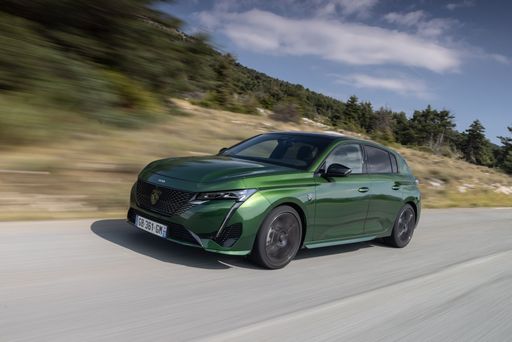 @ Peugeot / Stellantis Media
@ Peugeot / Stellantis Media
Peugeot 308
Mazda CX-30
The Mazda CX-30 blends sleek coupe-like lines with the practicality of a compact crossover, feeling more premium than its price tag suggests. It’s a joy to drive for anyone who likes a taut chassis and an interior that treats daily commutes like a small luxury escape.
details @ Mazda Motor Corporation
@ Mazda Motor Corporation
 @ Mazda Motor Corporation
@ Mazda Motor Corporation
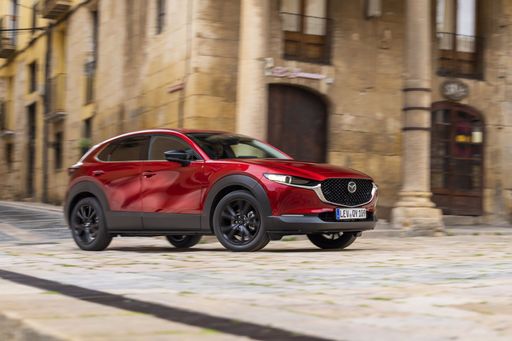 @ Mazda Motor Corporation
@ Mazda Motor Corporation
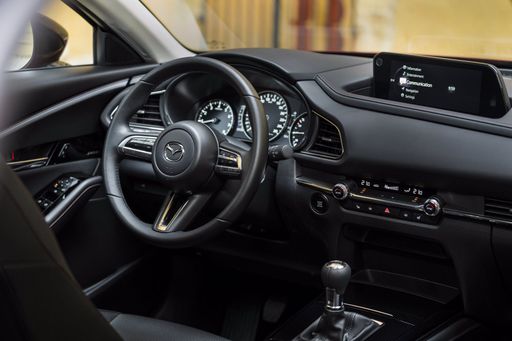 @ Mazda Motor Corporation
@ Mazda Motor Corporation
Peugeot 308
The Peugeot 308 brings a sleek, feline profile and an unexpectedly upscale cabin, with clever packaging and materials that feel a touch more premium than you might expect. It’s composed on the road, easy to live with for daily life, and a smart choice if you want a stylish hatch that still behaves when the road gets interesting.
details @ Peugeot / Stellantis Media
@ Peugeot / Stellantis Media
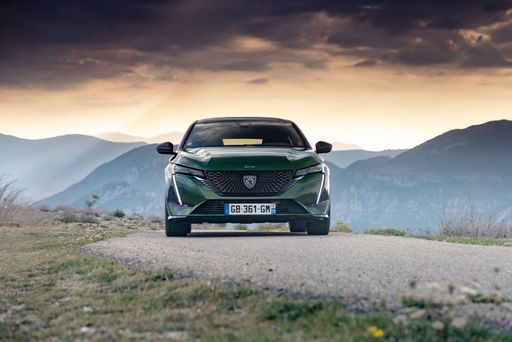 @ Peugeot / Stellantis Media
@ Peugeot / Stellantis Media
 @ Peugeot / Stellantis Media
@ Peugeot / Stellantis Media
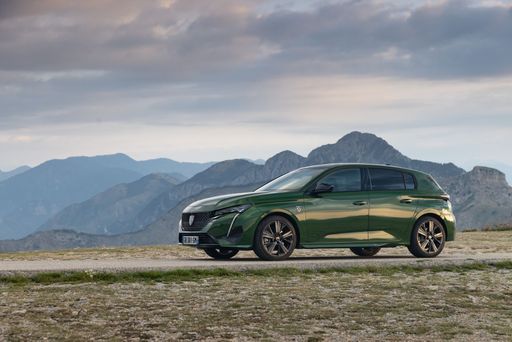 @ Peugeot / Stellantis Media
@ Peugeot / Stellantis Media
 @ Peugeot / Stellantis Media
@ Peugeot / Stellantis Media
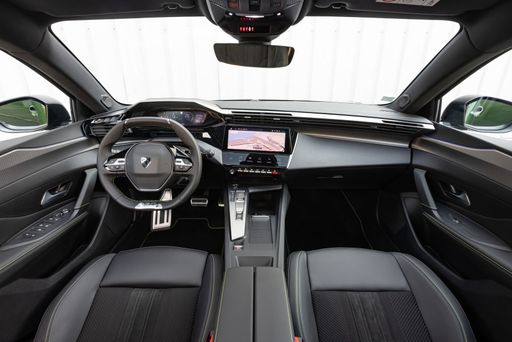 @ Peugeot / Stellantis Media
@ Peugeot / Stellantis Media
 @ Mazda Motor Corporation
@ Mazda Motor Corporation
|
 @ Peugeot / Stellantis Media
@ Peugeot / Stellantis Media
|
|
|
|
Costs and Consumption |
|
|---|---|
|
Price
25200 - 36800 £
|
Price
29200 - 42600 £
|
|
Consumption L/100km
5.7 - 6.6 L
|
Consumption L/100km
2.3 - 5 L
|
|
Consumption kWh/100km
-
|
Consumption kWh/100km
15.60 kWh
|
|
Electric Range
-
|
Electric Range
78 - 450 km
|
|
Battery Capacity
-
|
Battery Capacity
0.40 kWh
|
|
co2
129 - 148 g/km
|
co2
0 - 129 g/km
|
|
Fuel tank capacity
48 - 51 L
|
Fuel tank capacity
42 - 52 L
|
Dimensions and Body |
|
|---|---|
|
Body Type
SUV
|
Body Type
Hatchback
|
|
Seats
5
|
Seats
5
|
|
Doors
5
|
Doors
5
|
|
Curb weight
1455 - 1587 kg
|
Curb weight
1453 - 1749 kg
|
|
Trunk capacity
422 - 430 L
|
Trunk capacity
314 - 412 L
|
|
Length
4395 mm
|
Length
4367 mm
|
|
Width
1795 mm
|
Width
1852 mm
|
|
Height
1540 mm
|
Height
1438 mm
|
|
Max trunk capacity
1398 - 1406 L
|
Max trunk capacity
1258 - 1323 L
|
|
Payload
458 - 496 kg
|
Payload
430 - 503 kg
|
Engine and Performance |
|
|---|---|
|
Engine Type
Petrol MHEV
|
Engine Type
Petrol MHEV, Diesel, Plugin Hybrid, Electric
|
|
Transmission
Manuel, Automatic
|
Transmission
Automatic
|
|
Transmission Detail
Manual Gearbox, Automatic Gearbox
|
Transmission Detail
Dual-Clutch Automatic, Automatic Gearbox, Reduction Gearbox
|
|
Drive Type
Front-Wheel Drive, All-Wheel Drive
|
Drive Type
Front-Wheel Drive
|
|
Power HP
140 - 186 HP
|
Power HP
131 - 195 HP
|
|
Acceleration 0-100km/h
8.3 - 10.3 s
|
Acceleration 0-100km/h
7.6 - 10.6 s
|
|
Max Speed
191 - 204 km/h
|
Max Speed
170 - 225 km/h
|
|
Torque
238 - 240 Nm
|
Torque
230 - 300 Nm
|
|
Number of Cylinders
4
|
Number of Cylinders
3 - 4
|
|
Power kW
103 - 137 kW
|
Power kW
96 - 144 kW
|
|
Engine capacity
1998 - 2488 cm3
|
Engine capacity
1199 - 1598 cm3
|
General |
|
|---|---|
|
Model Year
2025
|
Model Year
2025
|
|
CO2 Efficiency Class
D, E
|
CO2 Efficiency Class
C, D, B, A
|
|
Brand
Mazda
|
Brand
Peugeot
|
What drive types are available for the Mazda CX-30?
The Mazda CX-30 is offered with Front-Wheel Drive or All-Wheel Drive.
The prices and data displayed are estimates based on German list prices and may vary by country. This information is not legally binding.
